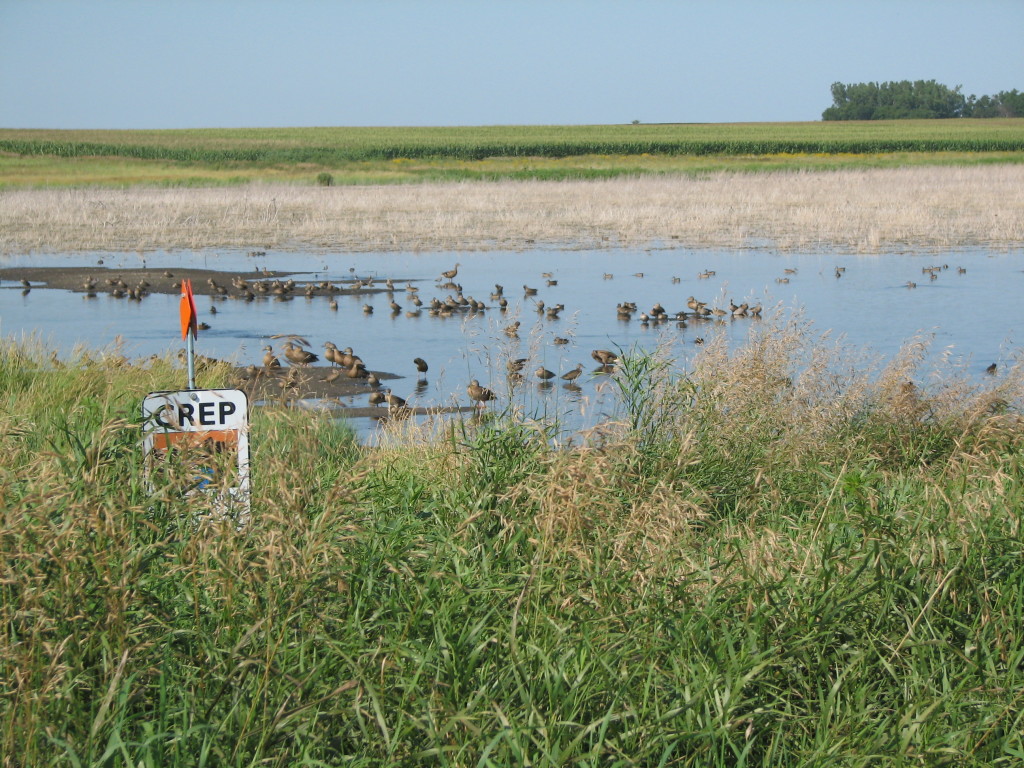
Credit: Minnesota Board of Water and Soil Resources
With a little over two weeks left, the legislature is nearing the end of the 2016 session and there is still much to be completed. One of those items is the capital bonding bill – a budget primarily funded through the issuance of state general obligation bonds. While most people think of bonding for road projects or constructing a new community center, state agencies also use bonding for land acquisition and conservation easement programs.
This year, the state’s Board of Water and Soil Resources (BWSR) requested $30 million which is especially important because it will provide vital state money to leverage federal dollars through the Conservation Reserve Enhancement Program (CREP) partnership. The goal for CREP is to enroll a total of 100,000 acres in the southern and western parts of the state over five years. Land will be prioritized based on expiring Conservation Reserve Program (CRP) contracts and the benefits to water quality. To participate, landowners can voluntarily sign first a CRP contract for 15 years and once that expires, the enrolled land will automatically be place into the Reinvest in Minnesota (RIM) Reserve perpetual easement program.
This 5-year investment in water quality will provide:
- A way to prioritize and target strategic water quality practices to improve water quality through wetlands restoration and drinking water wellhead protection,
- An important mechanism for implementing the stream buffer law by helping farmers and landowners install their buffers and maximizing payments and opportunities for producers to put voluntary conservation practices on the ground,
- A highly successful locally-led delivery system, centered on the strengths of Minnesota’s Soil and Water Conservation Districts while also utilizing other local partners, and
- An estimated 800 jobs through wetland restoration and buffer implementation work if the request is fully funded.
In order to meet the program acreage goals – 50,000 acres of buffers, 30,000 acres of restored wetlands, an additional 15,000 acres of restored wetlands in floodplains, and 5,000 acres near wellheads (the drinking water source for many small towns) – the state will need to provide funding through a variety of sources. Bonding is critical to ensure the state has its initial investment lined up and ready to go once the program kicks off. With an expected 2:1 match from the federal government, Minnesota will miss out on a significant amount of funding if the bonding request is not fully funded.
However, the Senate released its bonding bill first and it fails to invest in the RIM/CREP partnership. Only $1.5 million was allocated for RIM bonding and is far from sufficient to show the federal government how committed the state is to the proposed partnership. As the House continues to work on its own bonding bill, we must make sure every legislator knows the importance of CREP and how vital it is to invest bonding dollars in it.
As the home to the headwaters of the Mississippi and Red Rivers, Minnesota is a key location for resource protection and we owe it to our future generations to protect this water rich state.
Not only for today, but for future generations , we MUST keep our Minnesota lakes and rivers clean and welcoming to all citizens and tourists.
With walleye fishing alone providing over 40,000 jobs in Minnesota according to the USFWS, what might the total be for all activities that require pristine water? Swimming, canoeing, kayaking, bass fishing, musky fishing, crappie fishing, guiding, outfitting, making lures, making boats, restaurants, hotels, gas stations, coffee shops, making waders, making boots, binoculars, trout fishing, boat electronics, gathering bait, selling bait, making fishing line, campgrounds, camping equipment, hiking gear—must be millions of jobs depending on clean water in this state alone. How can any legislator believe clean water should not be prioritized over destructive farming practices? We need trees to combat climate change, not food tainted with glyphosate. We need an economy that serves all, not just a few.
I am in favor of voting for CREP.
I do like what I see writen about CREP. I hope it is voted for.